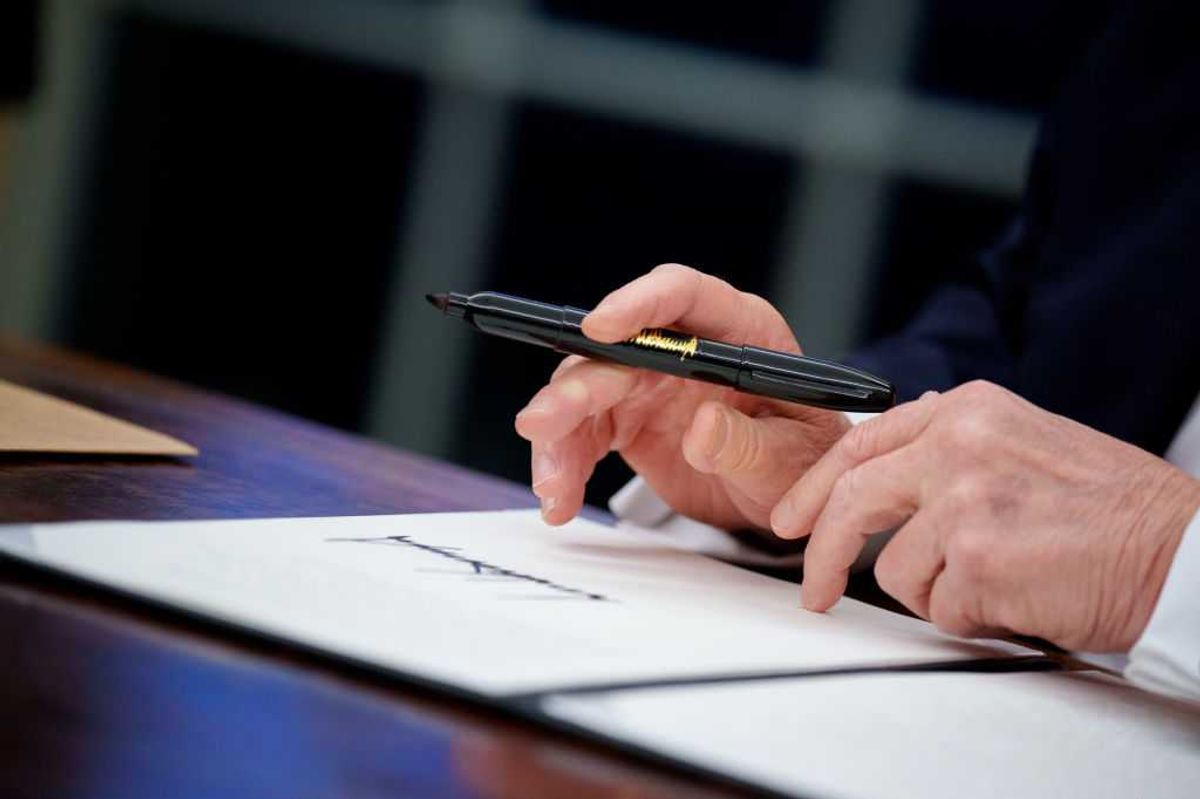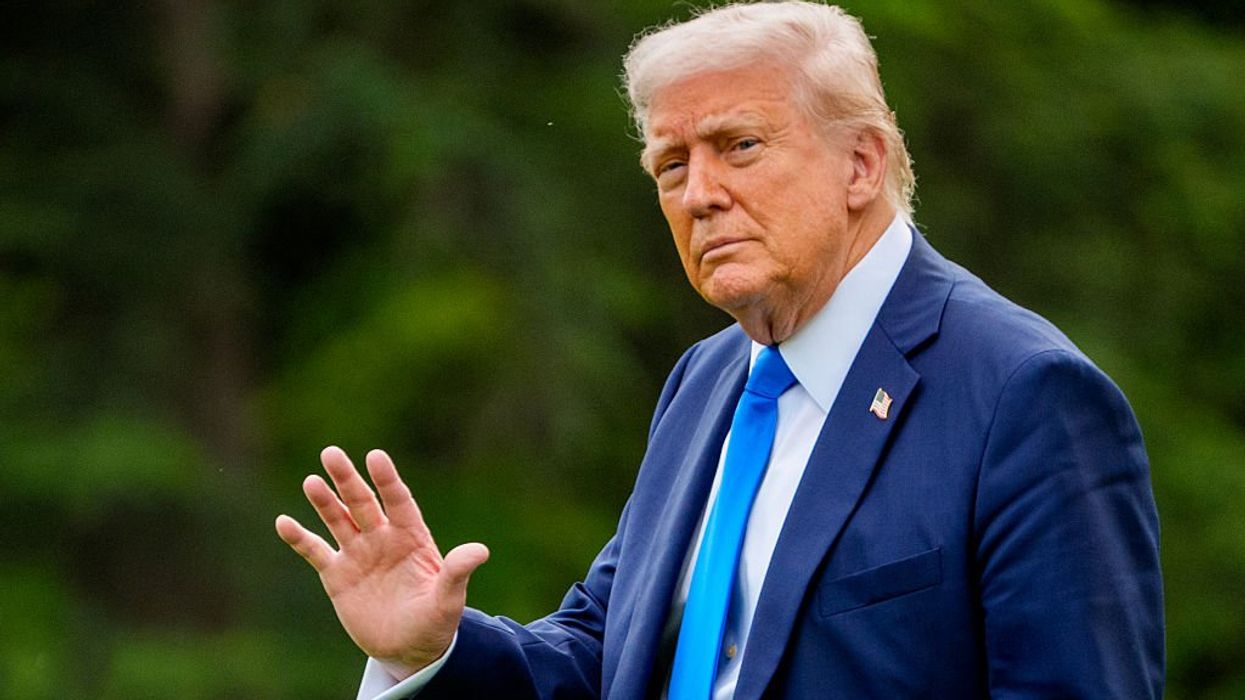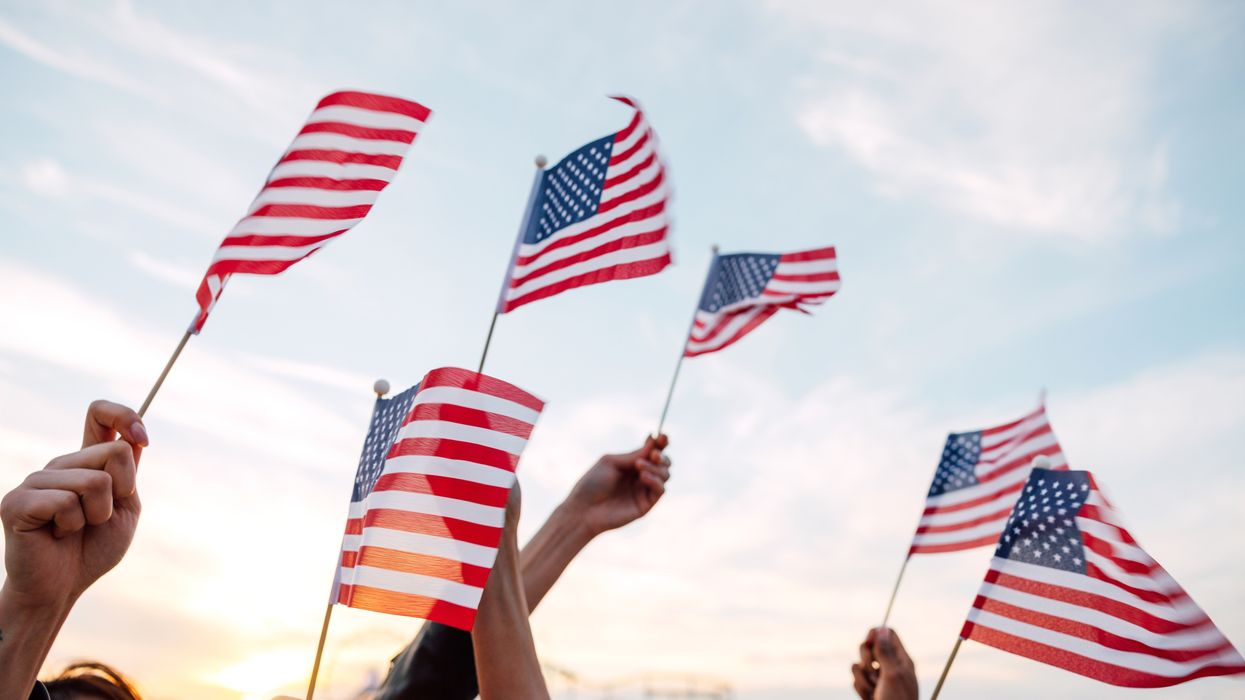The Fulcrum introduces Congress Bill Spotlight, a report by Jesse Rifkin, focusing on the noteworthy legislation of the thousands introduced in Congress. Rifkin has written about Congress for years, and now he's dissecting the most interesting bills you need to know about, but that often don't get the right news coverage.
What do Kobe Bryant, Dr. Seuss, Walt Disney, Alex Trebek, and Ruth Bader Ginsburg have in common?
What the bill does
The National Garden for America's 250th Anniversary Act would create a public park depicting 250 sculptures of notable historic Americans. The park would open in July 2026, tied to the “semiquincentennial” 250th anniversary of July 1776’s Declaration of Independence signing.
Who would be depicted in this park? While President Donald Trump’s executive order, which inspired it, contains a list of 250 proposed people, the actual legislative text contains no such names. Vince Haley, chair of Trump’s Domestic Policy Council, would be tasked with finalizing the selections.
Where would it be located? Again, the legislative text doesn’t say, stating that the decision is up to the Interior Secretary. While most “national” landmarks are in the nation’s capital of Washington, D.C., South Dakota Gov. Larry Rhoden (R) proposes locating it near Mount Rushmore in his state.
The congressional bill was introduced by Rep. Brian Mast (R-FL21).
Context
In the summer of 2020, amid a nationwide reckoning on race relations, statues of Confederate generals and other controversial figures with fraught histories on race were torn down around the country. Trump opposed these changes, calling them attempts to “erase our history.”
So that July, against this tumult, he issued an executive order creating a “National Garden of American Heroes.” A subsequent executive order in January 2021, on the third-to-last day of his term, proposed 250 Americans who could be depicted.
Most are some combination of “the usual suspects” like George Washington and Thomas Jefferson, plus favorites of the modern right like conservative Supreme Court Justice Antonin Scalia and televangelist pastor Billy Graham.
However, at least a few names might be surprising, like liberal Supreme Court Justice Ruth Bader Ginsburg. The list also includes abolitionist Harriet Tubman, even though Trump opposed putting Tubman’s face on the $20 bill, calling it “pure political correctness.” (President Andrew Jackson, the bill’s current face for now, is also one of the 250 proposed statues.)
A few proposed names are less historical and political but instead more recent and entertaining, such as Jeopardy host Alex Trebek and basketball legend Kobe Bryant.
President Joe Biden revoked Trump’s executive order creating the statue garden in May 2021, only for Trump to reinstate it in January 2025.
Who could be included?
The 250 final statues wouldn’t necessarily match the 250 proposed statues from Trump’s executive order. Still, they provide a rough guide, an assortment of notable Americans from all walks of life.
Here are a few particularly notable names each from various different categories:
- Musicians: Elvis Presley, Whitney Houston, Frank Sinatra, Aretha Franklin, Ray Charles.
- Athletes: Kobe Bryant, Muhammad Ali, Jackie Robinson, Jesse Owens, Babe Ruth.
- Actors and filmmakers: Walt Disney, Shirley Temple, John Wayne, Alfred Hitchcock, Jimmy Stewart.
- Writers and authors: Theodore “Dr. Seuss” Geisel, Mark Twain, Ernest Hemingway, Francis Scott Key (The Star-Spangled Banner), Harper Lee (To Kill a Mockingbird).
- Television figures: Jeopardy host Alex Trebek, The French Chef host Julia Child, comedian and 19-time Academy Awards host Bob Hope.
- Inventors: Steve Jobs, Thomas Edison, Henry Ford, Orville and Wilbur Wright.
- Advocates: Susan B. Anthony, Martin Luther King Jr., Rosa Parks, Harriet Tubman, Frederick Douglass.
- Pioneers and explorers: Neil Armstrong, Johnny “Appleseed” Chapman, Amelia Earhart, Christa McAuliffe (school teacher aboard the Challenger, which exploded in 1986), Sally Ride (first woman in space).
- First Ladies: Eleanor Roosevelt, Dolley Madison.
- Political figures: Alexander Hamilton, Jeannette Rankin (first woman to serve in Congress).
- Scientists: Albert Einstein, Katherine Johnson (the long-unheralded NASA mathematician portrayed in the movie Hidden Figures).
- Supreme Court justices: Ruth Bader Ginsburg, Antonin Scalia, Thurgood Marshall.
- Military: Douglas MacArthur, George Patton.
- Presidents: 17 of the 45 men to serve as president are listed for consideration. While some are “obvious,” such as all four carved into Mount Rushmore, two lesser-known names are Calvin Coolidge and Grover Cleveland. Three perhaps surprising Democratic presidents include Franklin D. Roosevelt, Harry S. Truman, and John F. Kennedy.
Plus a few notable names that don’t neatly fit into any of the above categories: Benjamin Franklin, Betsy Ross, Norman Rockwell, Helen Keller, Annie Oakley, Paul Revere.
What supporters say
Supporters argue the sculpture garden will serve much the same role as other iconic landmarks depicting notable Americans like the Lincoln Memorial, Jefferson Memorial, and Mount Rushmore.
“The National Garden will be a beautiful site to honor our history and recognize prominent American founders and generations of trailblazers,” Rep. Mast said in a press release. “America’s past and present is filled with heroes from all walks of life and this new garden will soon be open to the public to forever remember their contributions.”
Rep. Mast’s website also includes a survey where the public can nominate anybody for a statue. The poll also includes six specific names to upvote, four of whom are on the original proposed list: George Washington, Thomas Jefferson, Albert Einstein, and Babe Ruth. Two others are not: Trump himself and singer Kid Rock. (Both are still alive; all of the original 250 names are deceased.)
What opponents say
Opponents counter that the sculpture garden would be sycophantic propaganda at a time when the administration is slashing money for more so-called “authentic” arts.
“For 60 years, the [National Endowment for the Humanities] has enhanced education at all levels — K-12, higher ed, and community-based — by supporting a thoughtful and critical engagement with history, art, and culture,” Northwestern University Art History Professor Rebecca Zorach wrote in a Chicago Tribune opinion column. “Diverting NEH funding toward the commissioning of top-down, politically prescribed ‘art’ is an affront to the vital work the NEH has historically done.”
Opponents may also counter that this basic idea functionally already exists, in the form of the National Statuary Hall. Each of the 50 states selects two notable figures for statues representing their home states, totaling 100 statues displayed at the U.S. Capitol Building.
However, each individual legislature selects their own state’s statues, while Trump’s idea would select them at the federal level instead. At least while Trump or a Republican is president, this would make it less likely that certain statues would be taken down, like Virginia’s 2020 vote to remove Confederate Gen. Robert E. Lee while Trump was president.
Odds of passage
The bill has attracted two cosponsors, both Republicans: Reps. Mike Lawler (R-NY17) and Barry Moore (R-AL1).
It awaits a potential vote in the House Natural Resources Committee, controlled by Republicans.
Jesse Rifkin is a freelance journalist with the Fulcrum. Don’t miss his report, Congress Bill Spotlight, on the Fulcrum. Rifkin’s writings about politics and Congress have been published in the Washington Post, Politico, Roll Call, Los Angeles Times, CNN Opinion, GovTrack, and USA Today.
SUGGESTIONS:
Congress Bill Spotlight: Preventing Presidential Inaugurations on MLK Day, Like Trump’s
Congress Bill Spotlight: No Invading Allies Act
Congress Bill Spotlight: Suspending Pennies and Nickels for 10 Years
Congress Bill Spotlight: Trump’s Birthday and Flag Day Holiday Establishment Act




















